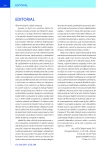-
Medical journals
- Career
LAPAROSCOPIC RESECTION OF STENOSIS OF URETER – VIDEO
Authors: Milan Hora 1; Petr Stránský 1; Tomáš Ürge 1; Olga Dolejšová 1; Hana Sedláčková 1; Tomáš Pitra 1; Ivan Trávníček 1; Jiří Ferda 2
Authors‘ workplace: Urologická klinika, LF UK a FN Plzeň 1; Klinika zobrazovacích metod LF, UK a FN Plzeň 2
Published in: Ces Urol 2017; 21(3): 207-209
Category: Video
Overview
Introduction:
The development of endoscopic methods and their widespread use in the treatment of urolithiasis increases the risk of ureteric trauma and subsequent ureteral stenosis, which leads to resection or other performance on the ureter. Open surgery with different types of reconstruction (most often resections or re-implantations) are standardized with relatively satisfactory results. Similar techniques are also used for other pathologies, especially for low risk urothelial carcinoma or utereral endometriosis. The disadvantage of open surgery is a relatively extensive intervention in the integrity of the abdominal wall. This disadvantage can be eliminated by miniinvasive laparoscopic / robotic approach. The video presents one case of using laparoscopy for resection of the ureter.Material:
3107 laparoscopic procedures were performed between 1/2003 and 7/2017. Primary ureteral operations were 46 (1.5% of all laparoscopies) – 22x ureterolithotomy, 9x ureterocutaneostomy, 7x reimplantation, 7x deliberation, 1x resection). Of course, many other procedures also involve extensive work with ureters, especially nephroureterectomy (140 cases) and radical cystectomy (33 cases).Indication and surgical procedure of laparoscopic resection of the ureter:
Female, 34 years old, after repeated treatment of left-sided urolithiasis by ureteroscopy and percutaneous nephroscopy (PCNL). Now, megaureter of the left due to a duplex stenosis of the middle ureter measuring 2 cm in length, endoscopic dilatation with stent without effect. Proven by non-contrast CT, ascending ureterography and nephrostomogram. According to scintigraphy, the left renal function was 17%. Surgery was performed in a flank position on the right side with the left lower limb elevated, allowing simultaneous laparoscopic and endoscopic access (flexible cystoscopy with ureteric probe). First, a ureteral catheter was inserted endoscopically to the site of stenosis. Capnoperitoneum was established at 12 mm Hg pressure, operated from 3 ports (10 mm in the umbilicus for the camera), 2 ports 5 mm for tool. The dorsal peritoneum was incised laterally to colon with the harmonic scalpel, and the Gerota’s fascia was incised. The ovarian vessels were released and then the ureter is liberated with hook from fibrotic changes to surrounding tissue. The stenotic section of the ureter was resected. An ureteral stent (double loop) was introduced into the renal pelvis. The caudal non-dilated ureter was briefly spatulated (incised) and ureterorrhaphy was performed with single 3-0 polyglactin stitches.Results:
The postoperative course was complicated by long-term insertion of nephrostomy and ureteral stent for repeated mild leakage of the contrast agent from anastomosis at nephrostomogram. Therefore nephrostomy and stent were removed at 12 weeks post procedure. Seven months after surgery, the kidney is withoud dilatation on ultrasound and the renal function at scintigraphy increased to 34%.Conclusion:
In carefully selected cases, laparoscopy can replace open access to ureteral operations including resection with subsequent ureterorrhaphy.KEY WORDS:
Ureteral stricture, resection of ureter, ureterorrhaphy, laparoscopy.
Sources
1. Schraml J, Knespl J. Laparoscopic injury of the ureter. Ces Urol 1998; 2(5): 33–35.
2. Wagenknecht L, Jandejsek J. Ureteral endometriosis. Ces Urol 2013; 17(4): 278–281.
3. Hlaváčová J, Jambura J, Kouba J, Bulka J, Eret V, Hora M. Early surgical management of ureteral trauma. Ces Urol 2011; 15(3): 158–166.
4. Kovářová D, Hlaváčová J, Dolejšová O, et al. Management of renal injury in the Department of Urology at the University Hospital in Pilsen. Ces Urol 2013; 17(3): 166–174.
5. Tang ZY, Chen Z, He Y, et al. Laparoendoscopic single‑site ureteroureterostomy with intraoperative retrograde ureteroscopy‑assisted technique for benign proximal and middle ureteral strictures: a single‑center
experience. Journal of laparoendoscopic & advanced surgical techniques Part A 2014; 24(7): 493–496.
6. Szewczyk J, Krhut J, Fikoczek H, Kalusková I. Iatrogenic ureteral lesion diagnosed after one month. Ces Urol 2015; 19(3): 216–219.
7. Tsuru N, Mugiya S, Sato S. Retrograde flexible ureteroscopy‑assisted retroperitoneal laparoscopic ureteroureterostomy for refractory ureteral stricture: a case report. International journal of surgery case reports. 2016; 20 : 77–79.
8. Hora M, Stránský P, Eret V, et al. Laparoscopic ureteral reimplantation – video. Ces Urol 2016; 20(2): 97–99.
9. Macek P, Fanta M, Pešl M, et al. Modifications of laparoscopic ureterocystoneostomy. Ces Urol 2017; 21(1): 16–19.
10. Hung SC, Chiu KY, Cheng CL, et al. Ureteroscopy‑assisted laparoscopic segmental resection of ureteral stricture with a modified flank position: clinical experience. Journal of laparoendoscopic & advanced surgical techniques Part A 2017; 27(7): 691–695.
Labels
Paediatric urologist Nephrology Urology
Article was published inCzech Urology

2017 Issue 3-
All articles in this issue
- THE CLINICAL VALUE OF 99MTC‑MAG3 RENAL SCINTIGRAPHY IN THE FOLLOW‑UP OF PATIENTS AFTER PYELOPLASTY FOR UNILATERAL PELVIC‑URETERIC JUNCTION OBSTRUCTION
- LAPAROSCOPIC RESECTION OF STENOSIS OF URETER – VIDEO
- INFORMED CONSENT IN UROLOGY
- THE ROLE OF MULTIPARAMETRIC MAGNETIC RESONANCE IMAGING IN ACTIVE SURVEILLANCE OF PROSTATE CANCER
- ILICOURETERAL FISTULA AS A CAUSE OF LIFE-THREATENING HAEMATURIA
- HERNIATION OF THE URINARY BLADDER
- RARE HISTOLOGICAL FINDING OF INVASIVE UROTHELIAL CARCINOMA OF URINARY BLADDER
- LEIOMYOMA OF THE URINARY BLADDER AS AN INCIDENTAL FINDING DURING ULTRASONOGRAPHY EXAMINATION OF A PREGNANT PATIENT
- THE SIGNIFICANCE OF MRI IN DIAGNOSING PENILE FRACTURE IN A CASE REPORT OF A 16-YEAR-OLD BOY
- SIGNIFICANT PERSONALITY OF THE CZECH AND SLOVAK UROLOGY PROF. MUDR. JOZEF ŠVÁB, CSC.
- Czech Urology
- Journal archive
- Current issue
- Online only
- About the journal
Most read in this issue- THE SIGNIFICANCE OF MRI IN DIAGNOSING PENILE FRACTURE IN A CASE REPORT OF A 16-YEAR-OLD BOY
- THE ROLE OF MULTIPARAMETRIC MAGNETIC RESONANCE IMAGING IN ACTIVE SURVEILLANCE OF PROSTATE CANCER
- ILICOURETERAL FISTULA AS A CAUSE OF LIFE-THREATENING HAEMATURIA
- LAPAROSCOPIC RESECTION OF STENOSIS OF URETER – VIDEO
Login#ADS_BOTTOM_SCRIPTS#Forgotten passwordEnter the email address that you registered with. We will send you instructions on how to set a new password.
- Career

